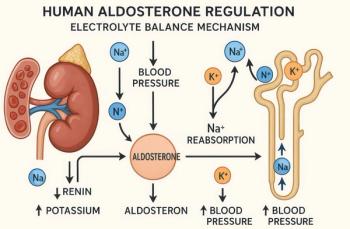
Biomarkers No Substitute for Traditional Cardiovascular Risk Factors
BOSTON -- Multiple biomarkers such as C-reactive protein, homocysteine, and B-type natriuretic peptide add nuance but little substance to time-honored prognostic cardiovascular risk factors, researchers here reported.
BOSTON, Dec. 20 -- Multiple biomarkers such as C-reactive protein, homocysteine, and B-type natriuretic peptide add nuance but little substance to time-honored prognostic cardiovascular risk factors, researchers here reported.
That finding emerged from an evaluation of 10 contemporary biomarkers measured in 3,209 participants in the Framingham Heart Study, stacked against standard risk factors such as blood pressure, cholesterol levels, smoking history, and weight.
Persons who had the highest combined biomarker scores had a quadrupling of the risk of death compared with those with the lowest scores (hazard ratio 4.08 P<0.001), said Framingham investigator Thomas J. Wang, M.D., and colleagues from Harvard Medical School and Boston University School of Medicine.
Those with the highest combined biomarker scores also had an 80% increase in risk of a first heart attack or other cardiovascular event (HR 1.84, P=0.02).
But assessment of clinical risk factors would have yielded the same risk stratification. The investigators reported in the Dec. 21 issue of the New England Journal of Medicine.
When results of multiple biomarker scores are factored into the statistical model used to predict risk of death within five years, sensitivity was improved by only about 0.30 to 0.42, according to James H. Ware, Ph.D., of the Harvard School of Public Health. Dr. Ware wrote a NEJM perspective that accompanied study by Dr. Wang and colleagues.
The bottom line, said Jonathan Halperin, M.D., director of clinical cardiology services at the Zena and Michael A. Wiener Cardiovascular Institute, at Mount Sinai in New York, is that the biomarkers are best used to "tip the scale" for patients in whom traditional risk factors suggest "intermediate risk and in whom additional preventive strategies or therapies are being considered."
Dr. Halperin, who was not involved in the study, said he was pleased that Dr. Wang and colleagues confirmed a modest benefit for the biomarkers, but hoped that the message that trickles down to patients "is that these are not diagnostic tests."
He noted that the a number of articles have hyped CRP and other biomarkers as blood tests for heart disease, a message that Dr. Halperin said is not helpful.
Biomarkers were measured in 3,209 Framingham participants during the examination cycle in 1995 and 1996.
The biomarkers measured were: CRP, B-type natriuretic peptide, N-terminal pro-atrial natriuretic peptide, aldosterone, renin, fibrinogen, D-dimer, plasminogen-activator inhibitor type 1 and homocysteine. Urinary albumin-to-creatinine ratio was also measured.
During a median follow-up of 7.4 years, 207 participants died and 169 had an incident major cardiovascular event.
Hazard ratios for biomarkers were adjusted for age, sex, and conventional risk factors including cigarette smoking, blood pressure, total cholesterol, HDL cholesterol, and diabetes. The analysis also adjusted for body mass index and serum creatinine.
Among the findings:
- The nine biomarkers for blood were significantly associated with increased risk for death (P<0.001) and for major cardiovascular events (P<0.005).
- For all 10 biomarkers, there were also significantly associated with increased risk of death (P<0.001) and cardiovascular events (P=0.04).
- The strongest predictor of death was B-type natriuretic peptide level (adjusted HR 1.40 per 1 SD increment in log value) followed by CRP (HR 1.39), urinary albumin-to-creatinine ratio (1.22), homocysteine (1.20) and renin (1.17)
- For cardiovascular events the just two biomarkers were associated with a significant risk: B-type natriuretic peptide (1.25) and urinary albumin-to-creatinine ratio (1.20).
The authors said the findings highlight both the strengths and weakness of the biomarkers for use in the real world of clinical practice-the markers are significantly associated with a high risk of clinical events, but that association adds "only moderately to the prediction of risk in an individual person."
Dr. Ware interpreted the data similarly. "This group of biomarkers makes a substantial contribution to the proportional-hazards model for predicting death from any cause, but it is of limited value for the risk stratification of individual patients," he wrote.
This finding is probably most disillusioning for promoters of CRP as a breakthrough test for assessing risk.
In this study, CRP predicted death, but not event risk. The authors wrote that this follows a number of studies that "have shown little improvement in the prediction of risk with the addition of C-reactive protein to conventional risk factors."
The authors noted that they only included a select group of biomarkers in this analysis, which may be a limitation. Moreover, they did not look for associations with non-major cardiovascular events and finally, they said they didn't account for visceral adiposity or insulin resistance, both factors that could have mediated associations between biomarkers and outcomes.
The National Heart, Lung, and Blood Institute, the Department of Agriculture, the American Diabetes Association, and the American Heart Association supported the study.
Shionogi, Osaka, Japan, performed natriuretic peptide assays.
Co-author Jacob Selhub, Ph.D., reported having served as a consultant to Cooper Clinic, Eprova, First Horizon, and Panlab and as a consultant for a patent-infringement case regarding an osteoarthritis treatment. Nader Rifai, Ph.D., reported receiving lecture fees from Ortho Diagnostics and grant support from Merck. Sander Robins, M.D., was a consultant to Hoffmann-La Roche and Reliant Pharmaceuticals and received grant support from GlaxoSmithKline. Ralph D'Agostino, Ph.D., served as consultant to Pfizer, Sanofi, and Bayer.
Newsletter
Enhance your clinical practice with the Patient Care newsletter, offering the latest evidence-based guidelines, diagnostic insights, and treatment strategies for primary care physicians.






























































































































































































































































































































